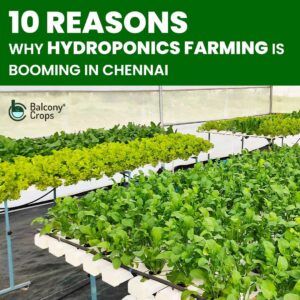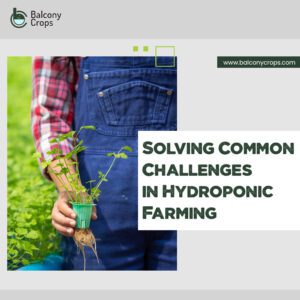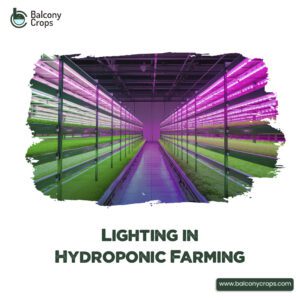Coco peat – the hydroponic hero of growing mediums! For both seasoned hydroponic enthusiasts and curious novices, understanding the foundational aspects of coco peat sets the stage for a successful foray into soil-less gardening. Today, we’re lifting the curtain on coco peat, from its manufacturing secrets to its hydroponic wonders.
Table of Contents
Understanding Coco Peat Production:
Coco peat, undergoes a fascinating journey from coconut husk to nutrient-rich growing medium. The production of coco peat is a meticulous process that starts with the extraction of coir fibers from coconut husks. Once the fibers are removed, what remains is the coir pith—the golden ticket to coco peat.
The coir pith undergoes thorough washing and buffering to remove any impurities and balance its pH levels. This ensures that the final product is a clean and stable medium for plant growth. The processed coir pith is then dried and compressed into blocks or bags for easy transport and storage.

What makes coco peat truly remarkable is its ability to absorb and retain water while still providing excellent aeration to the plant roots. This unique combination makes it an ideal medium for hydroponic systems, fostering healthy plant development.
The Versatility of Coco Peat as a Growing Media:
Coco Peat’s Water Retention Mastery:
Coco peat takes on the role of a plant-sitter with unparalleled expertise. Its outstanding water retention capacity ensures a moisture-rich environment, providing plants with the hydration they need without drowning their roots. It saves upto 90% of water compared to soil
Aerating Roots with Coco Peat:
Unlike traditional soil that may compact over time, coco peat remains fluffy and well-ventilated. This airy environment facilitates robust root development, creating a healthy and oxygen-rich space for plants to thrive.
Coco Peat’s No discrimination policy:
No plant discrimination here! Whether it’s leafy greens, robust tomatoes, or delicate herbs, coco peat accommodates a diverse range of plant species. It’s the green carpet rolled out for your entire garden, embracing each botanical resident.
Customization in Hydroponics:
In the precise world of hydroponics, coco peat stands out as a medium that can be tailored to fit specific plant needs. Its adaptability extends seamlessly to various hydroponic systems, making it an essential choice for both beginners and seasoned growers.
The Advantages of Coco Peat in Hydroponics:
pH Buffering Capability:
Maintaining the right pH levels is crucial in hydroponics. Coco peat acts as a natural pH buffer, helping to stabilize and balance the nutrient solution. This ensures that plants receive a consistent and ideal pH environment for nutrient uptake.
Eco-Friendly and Sustainable:
Coco peat isn’t just plant-friendly; it’s eco-friendly too. As a byproduct of coconut processing, it’s a sustainable choice that repurposes waste materials into a valuable resource for hydroponic cultivation.
Reusability and Longevity:
Unlike traditional soil that degrades over time, coco peat has impressive longevity. It can be reused across multiple growing cycles, making it a cost-effective and sustainable option for long-term hydroponic endeavors.
How to Identify High-Quality Coco Peat?
Here’s a guide to help you spot high-quality coco peat and make informed decisions for your soil-less garden.
Texture Matters:
High-quality coco peat boasts a fine, crumbly texture. Avoid products that feel overly coarse or sandy, as these may not provide the optimal structure for root development.
Color Clues:
Look for coco peat that exhibits a light to medium brown color. Avoid overly dark or reddish hues, as they may indicate excessive processing or the presence of undesirable impurities.
No Foul Odors:
Quality coco peat should have a neutral, earthy scent. Any foul or unpleasant odors may indicate improper processing or the presence of contaminants.
Hydration Test:
Perform a simple hydration test by adding water to a sample of coco peat. High-quality coco peat should rehydrate easily and quickly, expanding to several times its original volume.
Low Salinity Levels:
Check for information on salinity levels. Excess salts can hinder plant growth. Opt for coco peat with low salinity levels, ensuring a clean and nutrient-rich environment for your plants.
Absence of Foreign Matter:
Inspect the coco peat for any visible impurities, such as twigs or debris. A high-quality product will be free from foreign matter that could impact its performance.
Common Misconceptions about Coco Peat:
Like any green celebrity, Cocopeat is not immune to myths and misconceptions. Let’s debunk some common coco peat myths and set the record straight.
Myth: Coco Peat Is Soil
Reality:
While coco peat shares similarities with soil, it’s not soil. It’s a soil-less medium made from coconut husks, offering unique advantages such as enhanced aeration and water retention.
Myth: Coco Peat Is Only for Professionals
Reality:
Coco peat is a versatile medium suitable for all levels of gardening expertise. Its user-friendly nature makes it an excellent choice for both beginners and seasoned hydroponic enthusiasts.
Myth: All Coco Peat Is the Same
Reality:
Quality matters. Not all coco peat is created equal. Factors like texture, color, and processing methods can vary, impacting its performance. Choose high-quality coco peat for optimal results.
Myth: Coco Peat Is One-Time Use Only
Reality:
Coco peat is reusable! With proper care and maintenance, it can be used across multiple growing cycles. This not only saves costs but also contributes to sustainable gardening practices.
Myth: Coco Peat Is Prone to Pests
Reality:
Coco peat is naturally resistant to pests and diseases. Its composition and processing methods deter unwanted critters, providing a clean and safe environment for your plants.
Myth: Coco Peat Alters pH Dramatically
Reality:
While coco peat has a buffering effect on pH, it doesn’t cause drastic swings. It stabilizes the pH environment, promoting a consistent and optimal range for nutrient absorption.
So, whether you’re a seasoned gardener looking to elevate your hydroponic game or a novice eager to sow the seeds of soil-less success, consider coco peat not just as a medium but as a botanical companion in your green journey.
May your hydroponic endeavors be lush, your plants flourish, and your coco peat garden be a testament to the ever-growing harmony between nature and innovation. Happy gardening!










